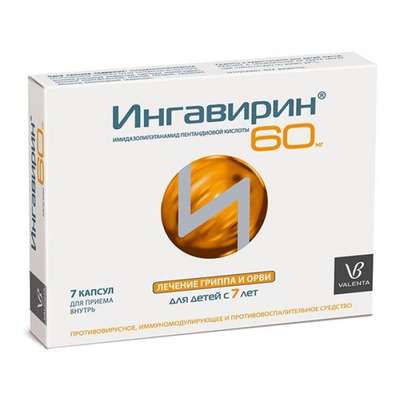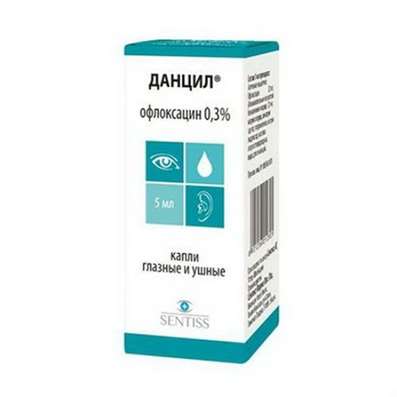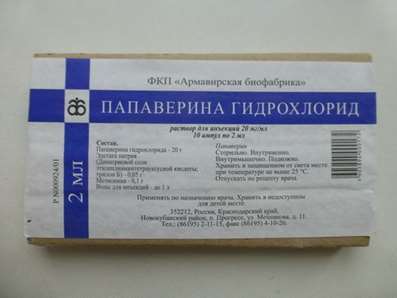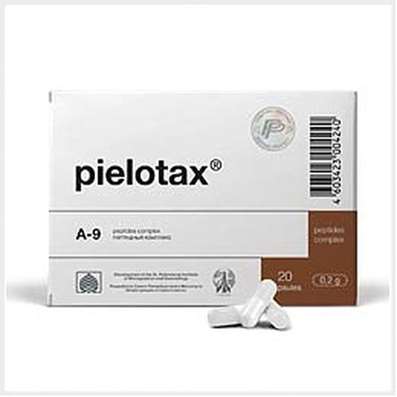Instruction for use: Etelcalcetide (Etelcalcetidum)
I want this, give me price
Pharmacological group of substance Calcitonin
Hormones of the thyroid and parathyroid glands, their analogs and antagonists (including antithyroid agents) / 67 /
Nosological classification (ICD-10)
E21.1 Secondary hyperparathyroidism not elsewhere classified
Secondary Hyperparathyroidism
N18.9 Chronic renal failure, unspecified
Edema of renal genesis
Z49.1 Aids that include extracorporeal dialysis
Hemodialysis, Chronic hemodialysis, Extracorporeal circulation, Thrombosis of hemodialysis shunt
Code CAS
1262780-97-1
Pharmacology
Pharmacological action - kaltsimimimeticheskoe, reducing the level of parathyroid hormone.
Pharmacodynamics
Mechanism of action. Etelcalketid is a synthetic peptide, calcium mimetic. Etalkalketid specifically binds to calcium sensitive receptors (CaSR) and causes their activation, which leads to a decrease in the secretion of parathyroid hormone (PTH) by the main cells of the parathyroid gland.
In patients on hemodialysis, a decrease in the concentration of PTH correlates with the concentration of etalkalcetide in the blood plasma. Reduction in the concentration of PTH is associated with a concomitant decrease in the concentrations of calcium and phosphate in the blood serum.
After a single intravenous bolus administration of etalkalcetide, the concentration of PTH is rapid (within 30 min). The severity and duration of the decrease in PTH concentration increase with increasing dose. Reduction of PTH concentration leads to a decrease in calcium concentration and limits the increase in phosphate concentration after dialysis. With IV bolus administration of ethalkalcetide 3 times a week, the decrease in PTH concentration persisted for 6 months.
Clinical trial data
Estetcalcetide was evaluated in three 6-month multicenter, randomized, double-blind, controlled clinical trials in patients with secondary hyperparathyroidism (GPT) in chronic renal disease who are on hemodialysis. Etalkalcetide was also studied in a single multicenter, uncontrolled study to assess the safety of the transfer of patients with secondary HGT on hemodialysis from oral administration of the zincalcetus to iv injections of ethalkylcetide.
The efficacy and safety of ethecalcetide in patients with secondary GPT with CRF who were on hemodialysis 3 times a week were evaluated in two 6-month multicenter, randomized, double-blind, placebo-controlled studies. In each of the studies, the primary endpoint was represented by the number of patients who achieved, over the period of evaluating the efficacy of reducing PTH concentration by more than 30% compared to the baseline value. Secondary endpoints were represented by the number of patients with an average PTH level of ≤300 pg / ml and a percentage change from baseline during the period of evaluation of the efficacy of such indicators as the concentration of PTH, albumin-corrected calcium in the serum, and the product of calcium phosphorus (Ca × P).
In these placebo-controlled studies, a total of 1023 patients participated (509 received etalkalcetide, 514 received placebo).
The demographic and baseline characteristics of both groups in both studies were comparable. Similar results were obtained in the studies: during the period of evaluation of the efficacy of ethecalcetide in comparison with placebo it statistically significantly increased the number of patients who decreased the average PTH concentration by more than 30% relative to the initial value, the number of patients with an average PTH concentration <300 pg / ml (Secondary efficacy evaluation), and also caused a statistically significant decrease in the concentration of PTH, albumin-corrected calcium, phosphate and Ca × P. Reduction in the concentration of PTH, albumin-corrected calcium, phosphate and Ca × P in the serum was maintained for 78 weeks. Ethylcalcetide caused a decrease in PTH concentration, regardless of its initial value, the duration of dialysis preceding treatment with cinacalcet, and the use of sterol forms of vitamin D.
The efficacy and safety of ethecalcetide was also assessed in a 6-month, randomized, cinakalcet-controlled, double-blind study involving 683 patients with secondary GPT and CRF who were on hemodialysis. Ethylcalcetide was not inferior to cinacalcetes in the number of patients with a decrease in mean PTH concentration> 30% relative to the baseline value during the efficacy evaluation period. Etalkalcetide also exceeded cynocalcet at the secondary endpoint: among patients randomly assigned to the ethalkylcetide group, the number of patients with a decrease in mean PTH concentration> 50% during the period of efficacy evaluation was higher than in the group of zincalcete. Statistically significant differences between the two groups were absent for the secondary endpoint, which estimated the average number of days per week with episodes of vomiting or nausea during the first 8 weeks of treatment.
An estimate of the changes in the concentration of albumin-corrected calcium in the serum when transferring patients from the zincalcetus to etalkalcetide was performed in 147 patients. The results showed that treatment with ethecalcetid at the initial dose of 5 mg is safe to start 7 days after the abolition of the cinacalcet at a concentration of albumin-corrected calcium in the serum> 8.3 mg / dl at the time of transfer.
Pharmacokinetics
Suction. In patients with CRF and secondary GPT who require hemodialysis, the pharmacokinetics of ethalkylcetide were linear and did not change over time, either after iv injection of a single dose (5-60 mg) or after iv repeated doses (2, 5-20 mg). After iv introduction, the kinetics of ethalkylcetide exhibited a tri-exponential decline. Against the background of intravenous infusion 3 times a week at the end of 3-4 hours of hemodialysis, the concentration of etalkalcetide in the blood plasma reached an almost equilibrium state in patients with CRF 4 weeks after the start of treatment, while the observed cumulation increased by 2-3 times, and The effective T1 / 2 was 3-5 days. In patients with normal renal function, there is a rapid removal of etalkalcetide, while in patients with CRF who require hemodialysis, hemodialysis becomes the main way of eliminating etalkalcetide.
Distribution. In the population pharmacokinetic model, Vss was approximately 796 liters. Etalkalcetid predominantly binds to serum albumin by reversible covalent binding. The ability for non-covalent binding in ethecalcetid is low, and the unbound fraction is 0.53. The ratio between the concentrations of 14C-etalkalcetid in blood and blood plasma is about 0.6.
Metabolism. Ethylcetcide is not metabolized by isoenzymes of the cytochrome CYP450 system. In the blood, ethecalcetid undergoes biotransformation by reversible disulfide exchange with endogenous thiols with the predominant formation of conjugates with serum albumin.
Exposure of biotransformation products in blood plasma was approximately 5 times higher than that of ethalkylcetide, and the AUC of biotransformation products was comparable to the profile of ethalkylcetide.
Excretion. In patients with chronic renal failure who required hemodialysis, hemodialysis became the main way of eliminating etalkalcetide. Effective removal of etalkalcetid occurred with a clearance of hemodialysis of 7.66 l / h. After administration of a single dose of radiolabeled etkalcetidide, patients with CRF and secondary GPT who required hemodialysis, approximately 60% of 14C-etalkalcetide were found in the dialysate, and in urine and feces in total, 7% during 175 days of the collection period.
Special patient groups
Liver failure. Formal pharmacokinetic studies on the use of etalkalcetide in patients with hepatic insufficiency have not been conducted. In vitro studies have shown that ethecalcetide is not a substrate, inhibitor or inducer of CYP450 enzymes.
Renal insufficiency. Formal pharmacokinetic studies on the use of etalkalcetide in patients with renal insufficiency from mild to severe were not conducted. Characteristics of the pharmacokinetics of ethalkylcetide were compiled for patients with CRF on hemodialysis. Ethylcetcide is intended for use in patients with chronic renal failure who are on hemodialysis.
Body weight, sex, race and age. The results of population pharmacokinetic analysis indicate that body weight (from 29 to 163 kg), sex, race and age (from 20 to 93 years) do not influence the pharmacokinetics of ethalkylcetide.
Elderly age. The pharmacokinetics of ethecalcetid in patients 65 years of age and older is similar to that of patients under 65 years of age.
Children. Among patients under 18 years of age, studies of the pharmacokinetics of ethalkylcetide have not been conducted.
Indications
Secondary hyperparathyroidism in patients with chronic renal failure who are on hemodialysis.
Contraindications
Hypersensitivity; Hypocalcemia (the concentration of albumin-regulated calcium in the blood serum is below the lower limit of normal values (see "Precautions"), pregnancy, breast-feeding, age to 18 years.
pregnancy and lactation
Controlled studies of ethalkylcetide with the participation of pregnant women were not conducted. In pre-clinical studies, there was no effect on embryo-fetal development in rats and rabbits with intravenous ethalkalcetide in the period of organogenesis at an exposure 1.8-4.3 times higher than the exposure achieved in patients receiving ethalkalcetide when administered in a dose 15 mg 3 times a week. At a higher exposure (2.7-7 times higher than the exposure in patients), fetal growth was slowed, which was associated with such toxic manifestations in the female as hypocalcemia, tremor, weight loss and food intake. In studies on rats during prenatal and postnatal development, the effect on puberty, neurobehavioral and reproductive functions in the offspring was not revealed at an exposure 1.8 times higher than in patients receiving ethalkalcetide at a dose of 15 mg 3 times a week. At an exposure similar to that in patients, there was a minimal increase in the lethality of the offspring, a delay in the timing of delivery and a temporary decrease in the rate of postnatal growth, which was associated with such toxic manifestations in the female as hypocalcemia, tremor, weight loss and food intake. Studies in animals do not always allow you to predict the response to a drug in humans. It is not known whether etikaltsetid may have a negative effect on the fetus during its administration during pregnancy, so its use during pregnancy is contraindicated.
It is not known whether ethecalcetid penetrates into breast milk. Studies in rats have shown that 14C-etalkalcetid is excreted into milk in concentrations similar to those in blood plasma. Many drugs penetrate into human milk in humans, so taking into account the unwanted reactions that can cause etalkalcetidone in newborns, a decision should be made to abolish its use or stop breastfeeding, assessing the perceived benefit of continuing therapy for the mother and the possible risk of adverse effects on the newborn.
Reproductive function. There are no data on the effect of ethalkylcetide on human reproductive function. In rats, the effect on reproductive function was not observed.
Side effects
According to data on the use of etalkalcetide in patients in placebo-controlled studies and in a study with active control, the most common adverse reactions against the background of treatment are a decrease in calcium concentration in the blood, muscle spasms, diarrhea, nausea and vomiting. In most patients, these events were of mild or moderate severity and were of a temporary nature. The termination of treatment due to adverse reactions occurred mainly due to a decrease in the concentration of calcium in the blood, nausea and vomiting.
Undesirable reactions that have been identified as at least possibly associated with the treatment of ethecalcetid based on evidentiary data and the evaluation of the cause-effect relationship are listed below according to the following classification: very often (≥1 / 10); Often (≥1 / 100, <1/10); Infrequently (≥1 / 1000, <1/100); Rarely (≥1 / 10000, <1/1000); Very rarely (<1/10000).
From the side of metabolism and nutrition: very often - a decrease in the concentration of calcium in the blood1; Often - hypocalcemia1, hyperkalemia2, hypophosphatemia.
From the nervous system: often - headache, paresthesia3.
From the heart: often - decompensation CHF1.
From the side of the vessels: often - arterial hypotension.
From the digestive tract: very often - nausea, vomiting, diarrhea.
From the musculoskeletal system and connective tissue: very often - muscle spasms; Often - myalgia.
Description of individual adverse reactions
Hypocalcemia. In the ethkalcetide clinical study program, the asymptomatic decrease in calcium concentration below 7.5 mg / dL, or the asymptomatic decrease in the albumin-corrected calcium concentration in the range of 7.5 to 8.3 mg / dL that required treatment or the study was determined to be clinically significant, was recorded as a decrease in concentration Calcium in the blood. A decrease in the albumin-corrected calcium concentration below 8.3 mg / dL, accompanied by clinical manifestations, was recorded as hypocalcemia, indicating the relevant objective and subjective symptoms. Most of the events presented by the asymptomatic decrease in calcium concentration in the blood and hypocalcemia with clinical manifestations were mild or moderate in severity. In the pooled data of placebo-controlled studies, the proportion of patients who at least once recorded a serum albumin-adjusted serum albumin concentration of <7 mg / dl (7.6% in the treatment group) was higher in the ET group than in the placebo group Etilkaltsetidom, 3.1% in the placebo group), 7.5 mg / dL (27.1% in the ethealkylcetide group, 5.5% in the placebo group) and <8.3 mg / dl (78, 6% in the ethealkalcetide treatment group, 19.4% in the placebo group). In these studies, 1% of patients in the ethecalcetid treatment group and 0% of patients in the placebo group discontinued treatment because of the undesirable "low serum calcium concentration".
Elongation of the QTc interval, caused by hypocalcemia. In the pooled data of placebo-controlled studies, the proportion of patients with the maximum QTcF interval elongation greater than 60 ms relative to the baseline level (1.2% in the ethecalcetide group, 0% in the placebo group) was higher in the ET group than in the placebo group. The proportion of patients who had a maximum QTcF> 500 ms after the initial examination (measured before the dialysis procedure) was 4.8% in the ethecalcetide treatment group and 1.9% in the placebo group.
Decompensation of CHF (chronic heart failure). In a combination of placebo-controlled studies, the proportion of patients who had CHF decompensation requiring hospitalization was 2.2% in the ethecalcetide treatment group and 1.2% in the placebo group.
Interaction
There are no data on the pharmacokinetic drug interactions of ethalkylcetide. In vitro, ethecalcetide did not suppress or induce the activity of cytochrome CYP450 isoenzymes and was not their substrate. In vitro, ethecalcetide was not a substrate for efflux transport proteins and capture proteins (P-gp, BCRP, OAT1 and 3, OATP1B1 and 1B3, OST2, PERT1 and 2). In vitro, ethecalcetide also did not demonstrate the ability to inhibit common transporter proteins (P-gp, BCRP, OAT1, OAT3, OATP1B1, OATP1B3, OCT2 or export pump of bile salts).
Other drugs that reduce the concentration of calcium. Simultaneous use of other drugs that reduce the concentration of calcium in the blood serum and ethalkalcetide may lead to an increased risk of hypocalcemia (see "Precautions").
Overdose
There are no clinical data on the overdose of ethecalcetid. For patients receiving dialysis, etalkalcetide was administered in a single dose up to 60 mg or in a multiple dose up to 22.5 mg 3 times a week at the end of the dialysis procedure.
Symptoms: may lead to hypocalcemia with or without clinical manifestations and require treatment.
Treatment: although etalkalcetid is excreted in dialysis, hemodialysis was not studied as a therapy for its overdose. In order to timely conduct appropriate interventions in case of an overdose, it is necessary to monitor the serum calcium concentration and observe the patient to identify symptoms of hypocalcemia.
Routes of administration
In / in (intravenously).
Precautions
Hypocalcemia
Etalkalcetid reduces the serum calcium concentration and may lead to the development of hypocalcemia (see "Side effects"). Treatment with ethecalcetid should not be started in patients with CRF who are on hemodialysis, with an albumin-corrected serum albumin concentration lower than NGN (see Contraindications).
Follow the patient to identify hypocalcemia. Control of serum calcium in serum should be performed before therapy, within 1 week after initiation of therapy or dose adjustment, and every 4 weeks of treatment. Possible clinical manifestations of hypocalcemia include paresthesia, myalgia, muscle spasms and convulsions. The patient should be advised to consult a doctor in case of symptoms of hypocalcemia. With a clinically significant decrease in the concentration of albumin-corrected calcium in the blood serum, it is necessary to carry out measures aimed at increasing the concentration of calcium in the blood serum.
Ventricular arrhythmia and QT interval prolongation, caused by hypocalcemia
Reducing the concentration of calcium in the blood serum can lead to an elongation of the QT interval, which, in turn, may be accompanied by the development of ventricular arrhythmia. In patients with congenital QT prolongation syndrome, QT history prolongation, QT interval prolongation or sudden cardiac death in family history, and other conditions predictive of QT interval prolongation and ventricular arrhythmia development, careful monitoring of serum calcium concentration in The time of treatment with ethecalcetid.
Convulsions
The threshold of convulsive readiness can be reduced with a significant decrease in the concentration of calcium in the blood serum. In patients with convulsive disorders in the history, careful monitoring of serum calcium concentration during treatment with ethecalcetid should be made.
Decompensation of CHF
Reducing the function of the myocardium, hypotension and CHF may be associated with a significant decrease in the concentration of calcium in the blood serum. In patients with CHF in history (which may be associated with a decrease in serum calcium concentration), careful monitoring of serum calcium in the course of treatment with ethecalcetid should be ensured.
Simultaneous use with other drugs
Patients receiving ethalkalcetid should not be assigned a cynocaletz. Their simultaneous application can lead to the development of severe hypocalcemia.
Etalkalketid should be administered with caution to patients receiving any other drugs that reduce the concentration of calcium in the blood serum. Patients receiving other drugs that reduce the concentration of calcium in the serum should be carefully monitored.
Adynamic bone disease
With prolonged suppression of the concentration of PTH below 100 pg / ml, the development of adynamic bone disease is possible. If the PTH concentration falls below the recommended target range, it is necessary to reduce the dose or cancel therapy with sterol forms of vitamin D and / or ethalkalcetide. After withdrawal, therapy is resumed at lower doses to maintain PTH concentration within the target range.
Special patient groups
Children. In children, the safety and efficacy of ethalkylcetide have not been established.
Elderly patients. There were no clinically significant differences in safety and efficacy between patients 65 years of age and older and younger patients (> 8 and <65 years). There were no differences in plasma concentrations of etalkalcetide between patients 65 years of age and older and younger patients (> 8 and <65 years). Out of 503 patients receiving etalkalcetide in placebo-controlled trials, 177 patients (35.2%) were aged 65 years and older.
Liver failure. Ethylcalcetide is not exposed to hepatic metabolism, so it is expected that liver failure will not have a significant effect on the excretion of ethalkylcetide. The effect of hepatic insufficiency on the pharmacokinetics of ethecalcetide has not been studied.
Renal insufficiency. Etalkalcetid is indicated for patients on hemodialysis. The effect of the degree of severity of renal failure on the pharmacokinetics of ethecalcetide has not been studied.
Immunogenicity
Evaluation of the immunogenicity of ethalkylcetide was carried out by means of an immunological study based on surface plasmon resonance, which allowed detection of binding antibodies to ethecalcetide. In clinical studies, antibodies were detected in 7.1% (71 of 995) patients with secondary HTT treated with etalkalcetide up to 6 months (80.3% of them (57 of 71) of the antibody were detected at the initial Survey).
No changes in the pharmacokinetic profile, clinical response, or safety profile due to the presence of antibodies to ethecalcetide initially present or developed during treatment were noted. If there is a suspicion of the formation of antibodies to ethecalcetide, which is accompanied by clinically significant effects, it is necessary to decide whether to conduct an additional laboratory test to detect antibodies.
Influence on the ability to drive vehicles and work with machinery. Studies of the effect of ethalkylcetide on the ability to drive vehicles and work with mechanisms have not been carried out.

 Cart
Cart





